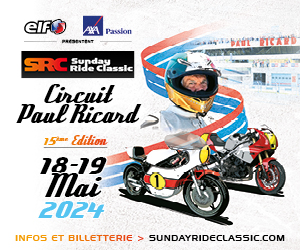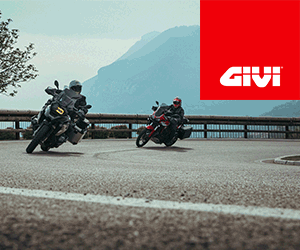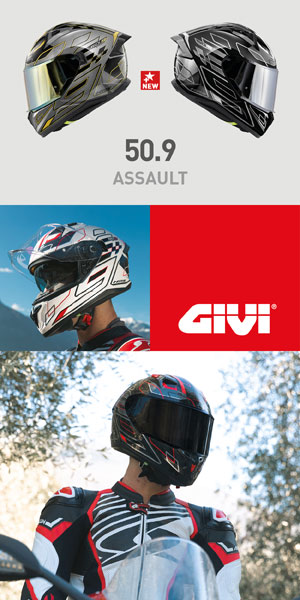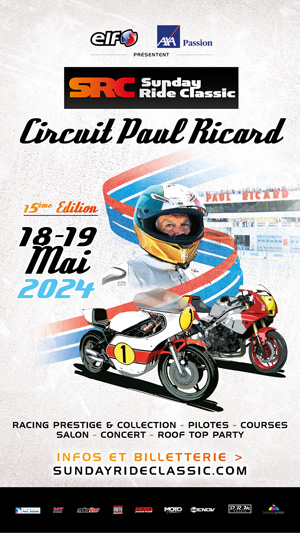Even if the recent project leader Takahiro Sumi affirms that Yamaha is constantly trying to respond to all kinds of requests from riders, we can only see that the development of its Grand Prix machines is done year after year in small steps. keys so as not to degrade its strong points, namely braking stability and cornering speed.
The result is a machine that is still generally competitive, even if it lacks a little top speed against its best opponents and now requires a slightly less pure steering than those of Valentino Rossi and Jorge Lorenzo at the time when they were teammates, otherwise the rear tire would deteriorate more quickly. The others got started, the Doctor a little less so…
To deal with this dual problem, Yamaha on the one hand hired a former Ducati engineer familiar with all the intricacies of the unique Magneti Marelli software, Marco Frigerio, and presented a 2020 prototype with an emphasis on power.
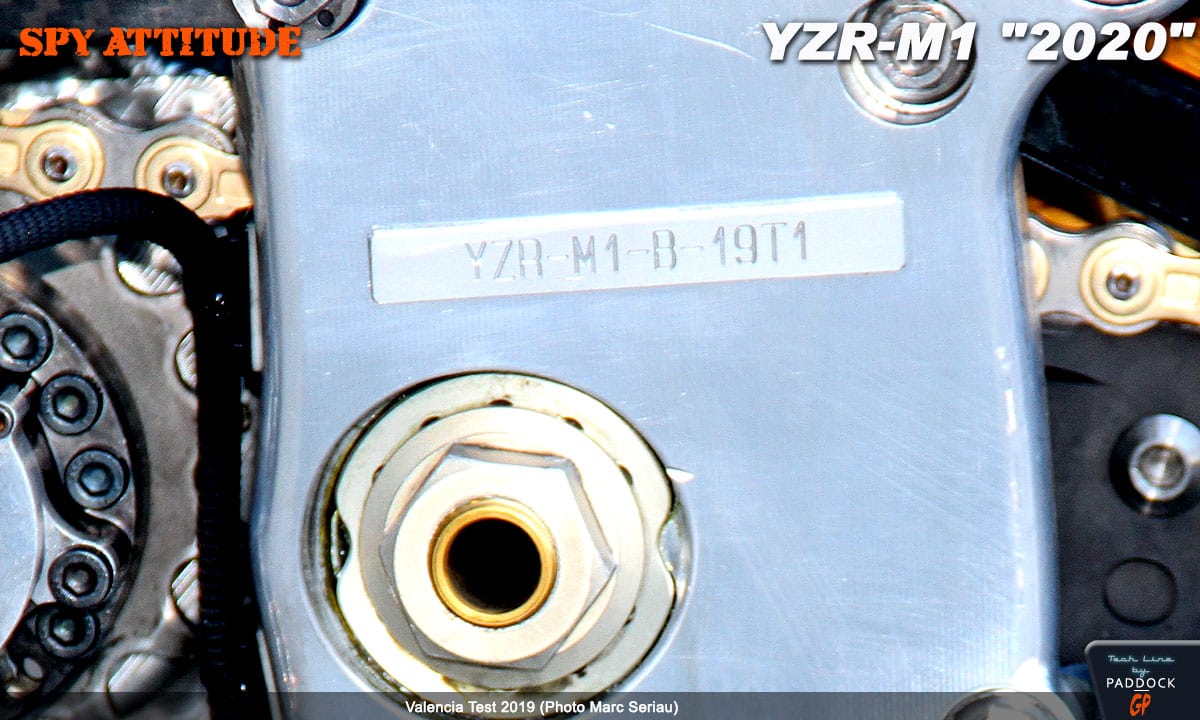
For this, like Honda in 2019, we adopted an absolutely direct air passage between the new, higher air intake and the air box located under the false tank. So much so that when you stand in front of said air intake, you can actually see the air filter...
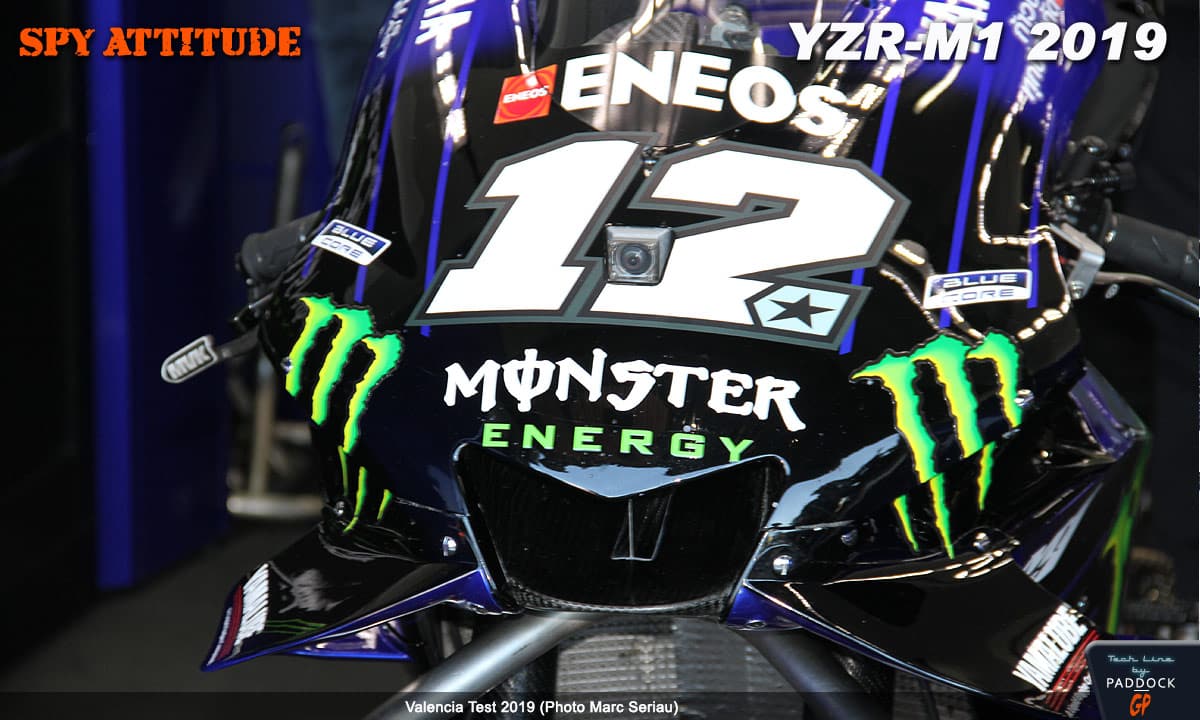
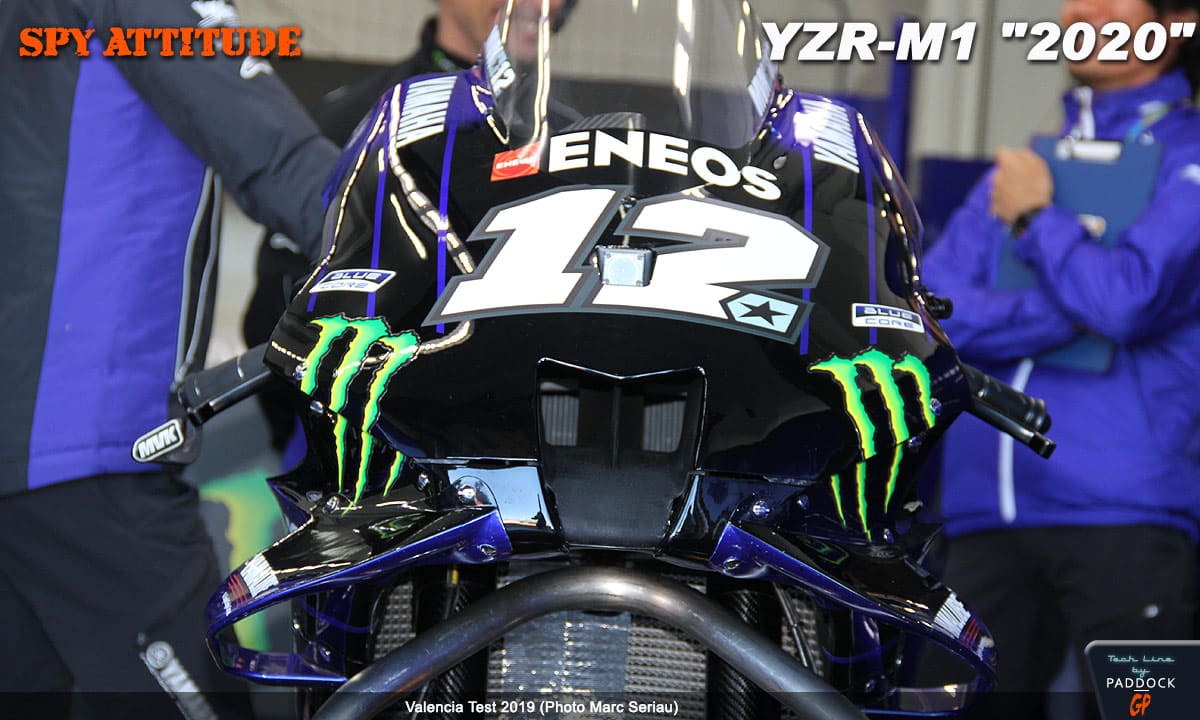
Obviously, this is not just what will bring horses in abundance, and, just as the 2019 Honda engine has few parts in common with the 2018, we can assume that it is the same at Yamaha where, according to our information, the new in-line 4-cylinder could not be fitted in the 2019 chassis.
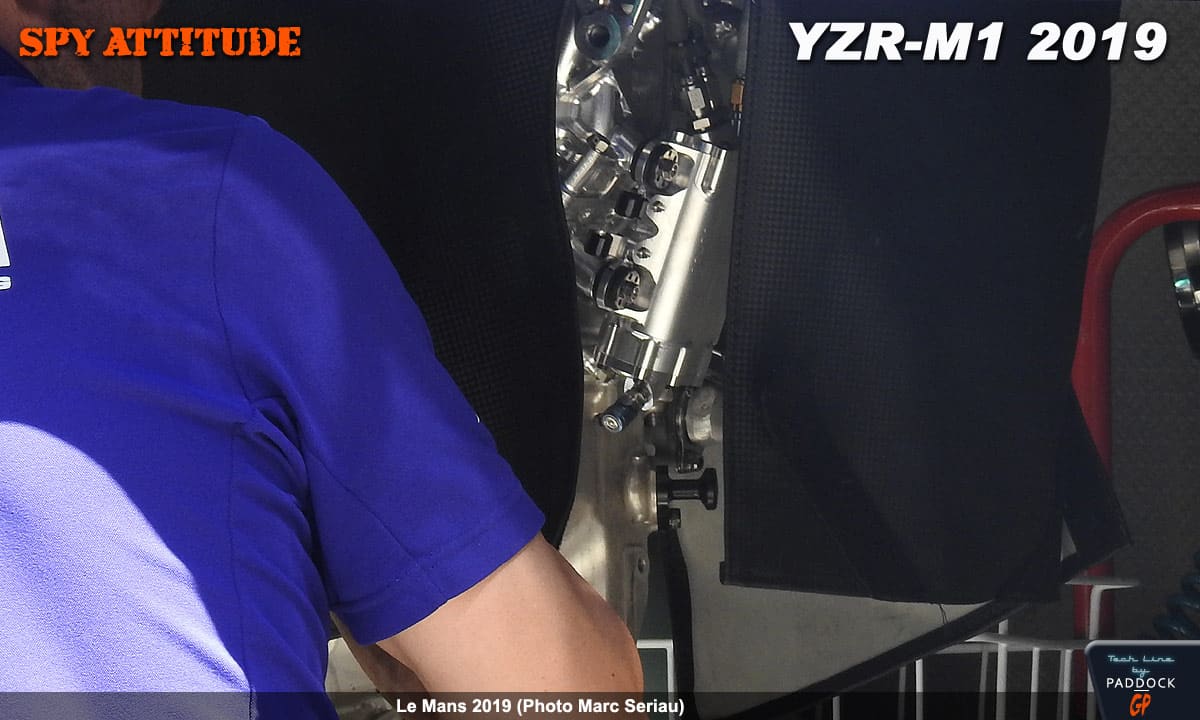
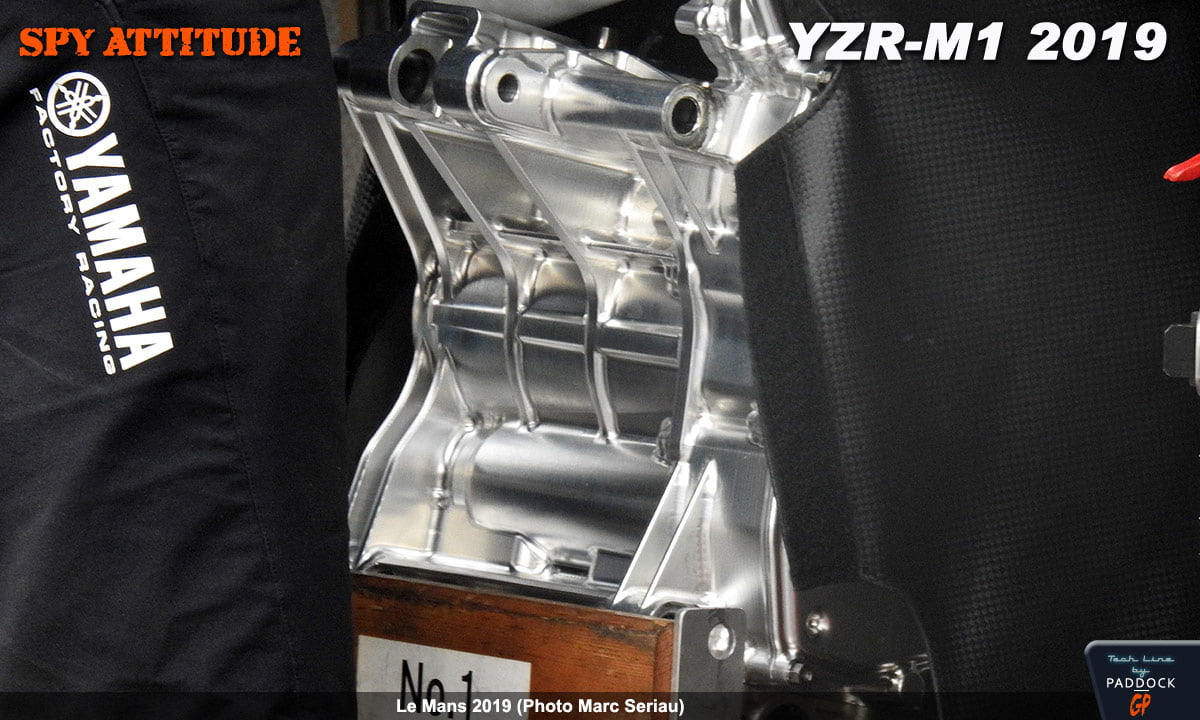
Entirely machined from the mass, Yamaha frames feature extremely thin spars, which explains the “buckling” that we can often observe on them. Sometimes we have been able to glimpse a disassembled frame, and certain parts do not seem to be more than a millimeter thick...
Iwata frames are also distinguished from others by non-hollowed triangle-shaped front engine mounts giving them a manta ray appearance.
The 2020 frame seen during the first winter tests, visibly barely finished, just sanded and without the traditional black paint dear to the three-tuned firm, had notable differences, starting with the “non-beveling” of the upper part. spars.
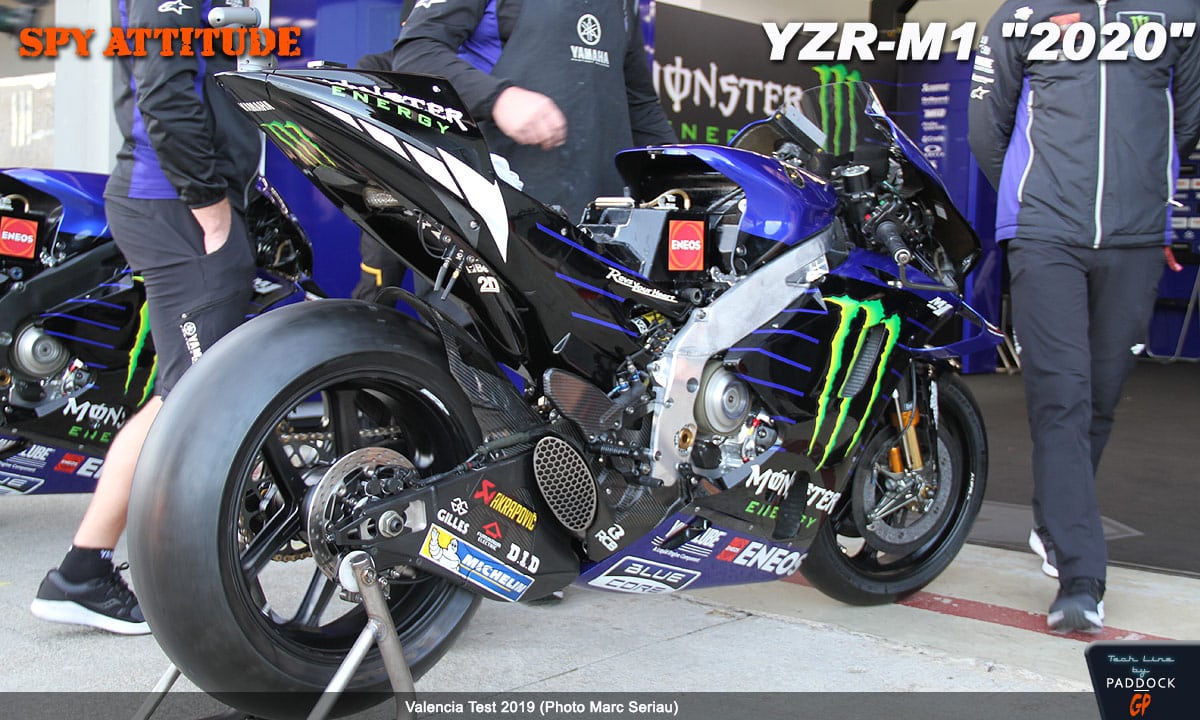
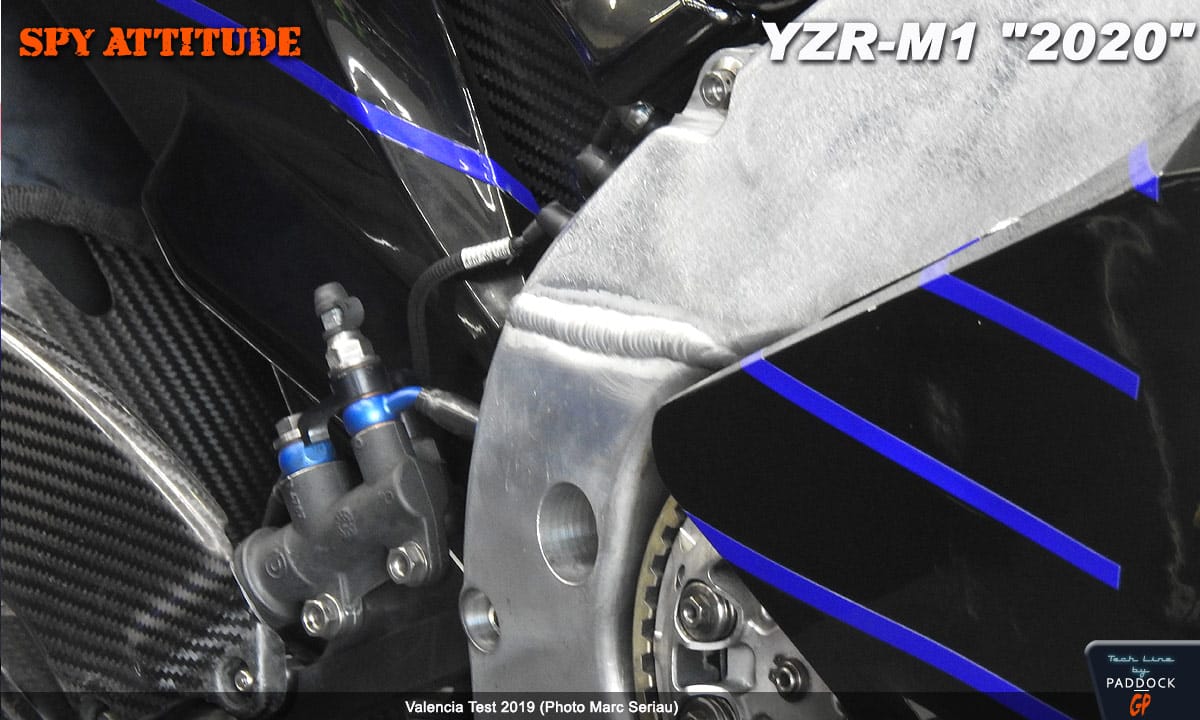
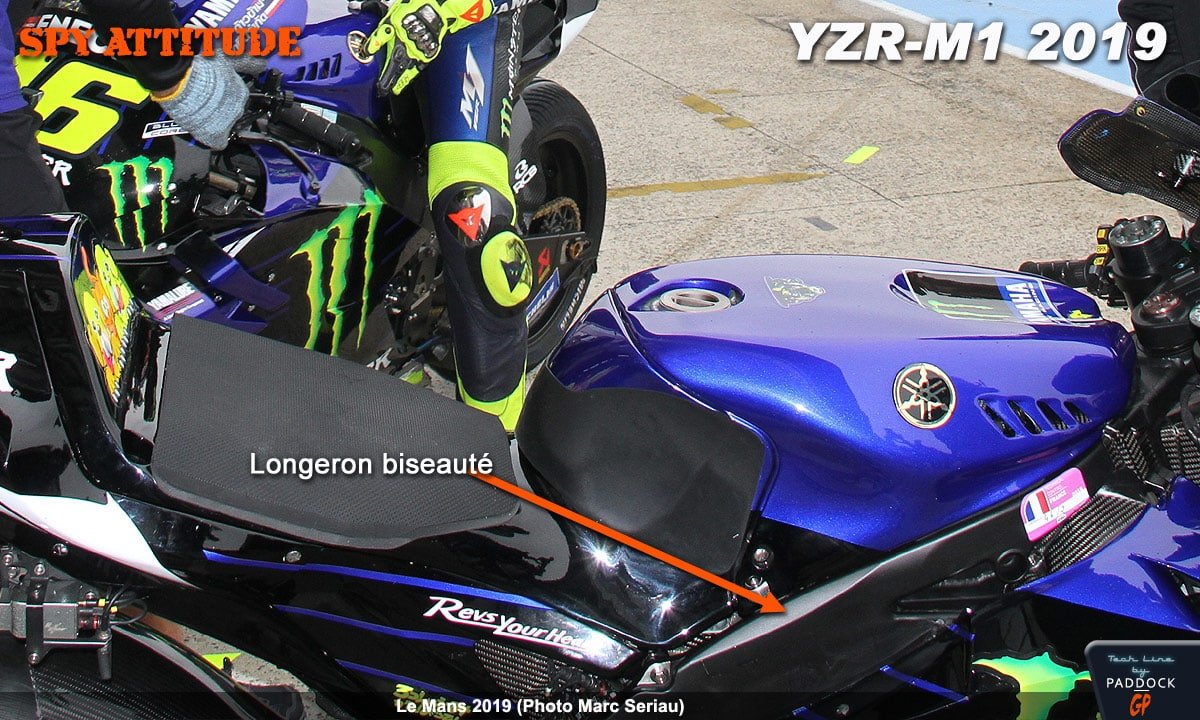
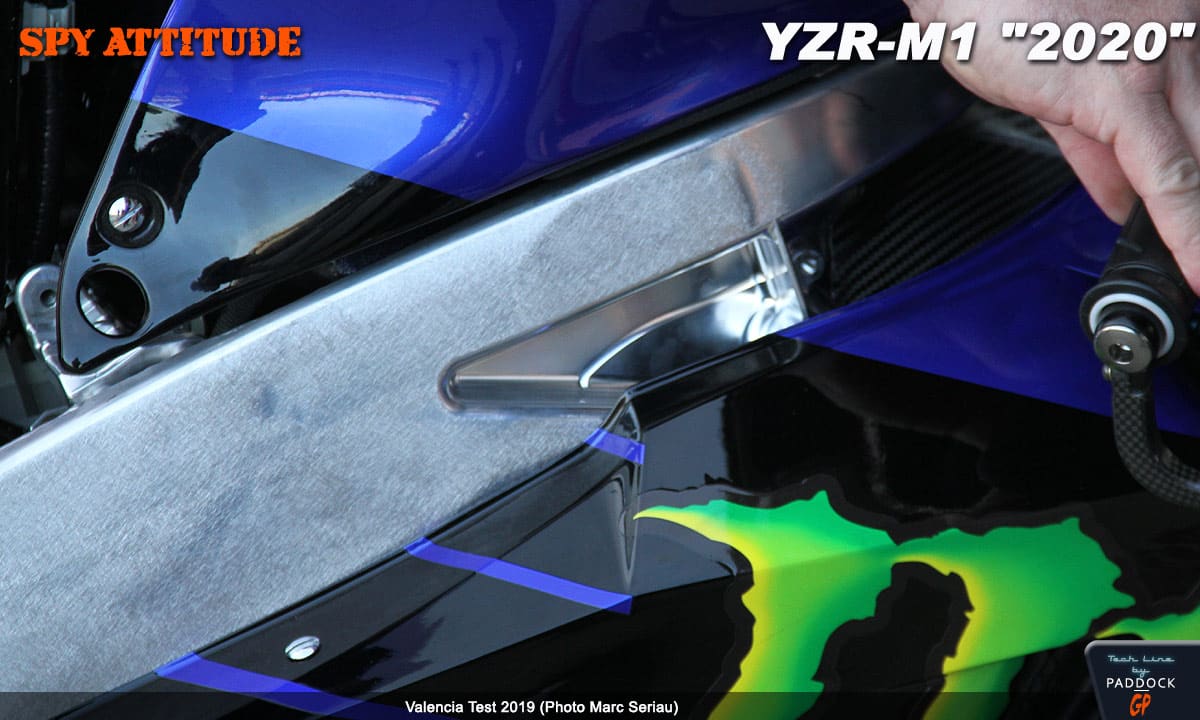
On the 2020 prototype, we also see that the triangular embossings, which until now included a lateral stiffening tube and a welded reinforcement plate, are now fully machined and that the stiffening tube seems to have disappeared or to have been reduced and positioned lower in the spar (impossible to see with the fairing).
If the first hypothesis proves true, this would perhaps allow the frame to “lung” by providing a certain flexibility during braking and acceleration. If it's the second, we don't know...
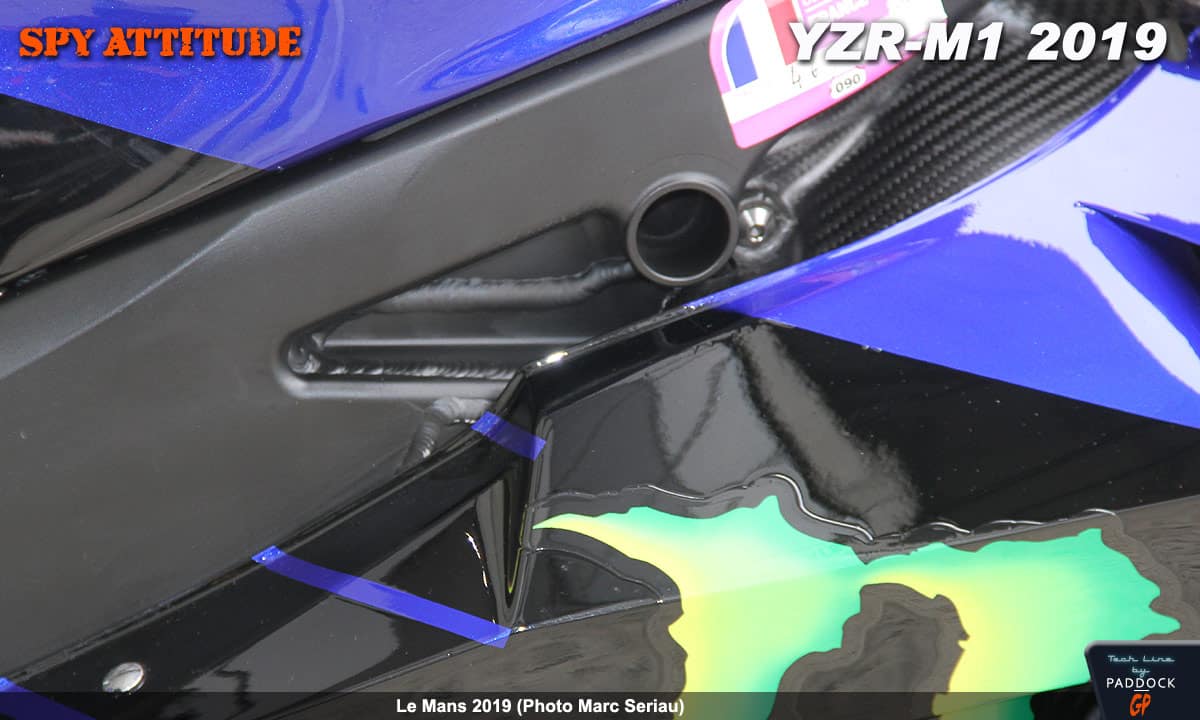
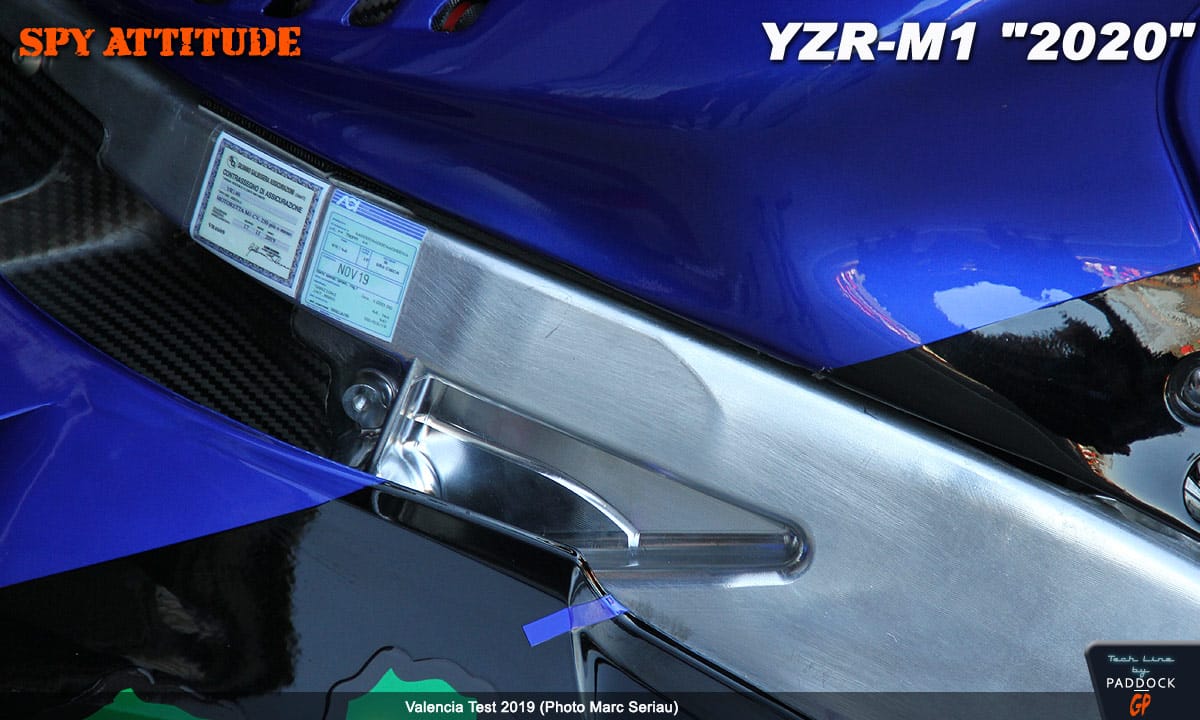
In its front part where we also observe the new white air passage, in 3D printing, in place of the carbon element. No doubt a temporary solution...
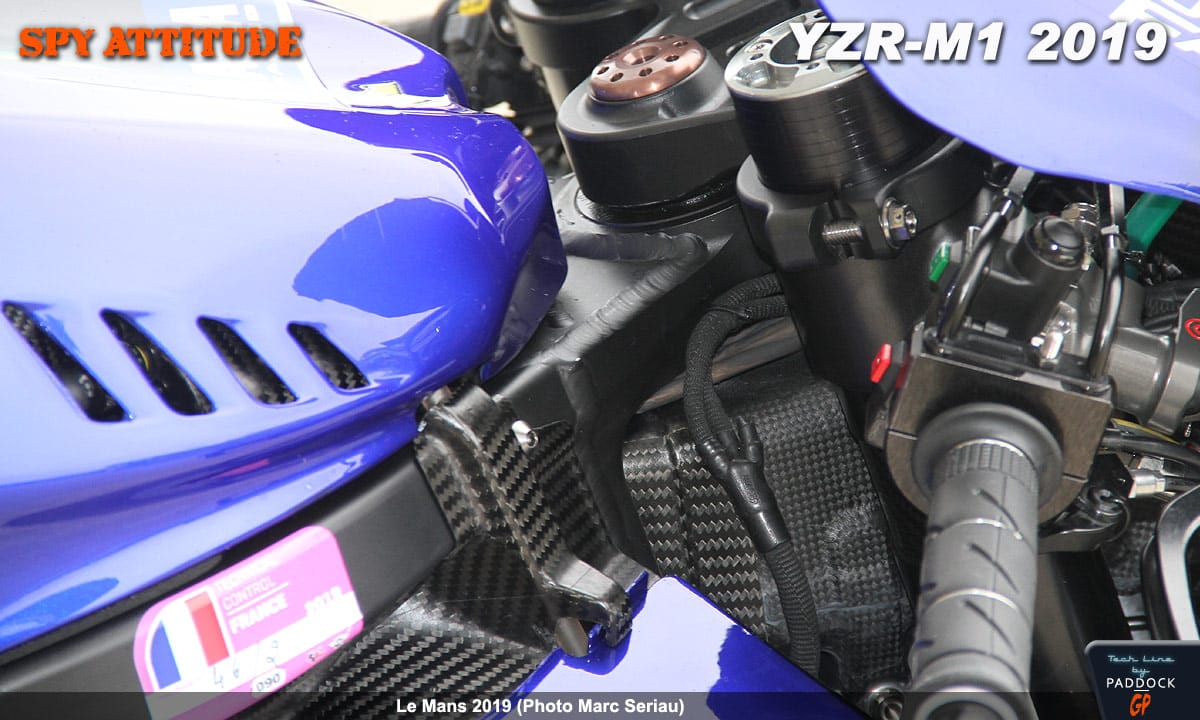
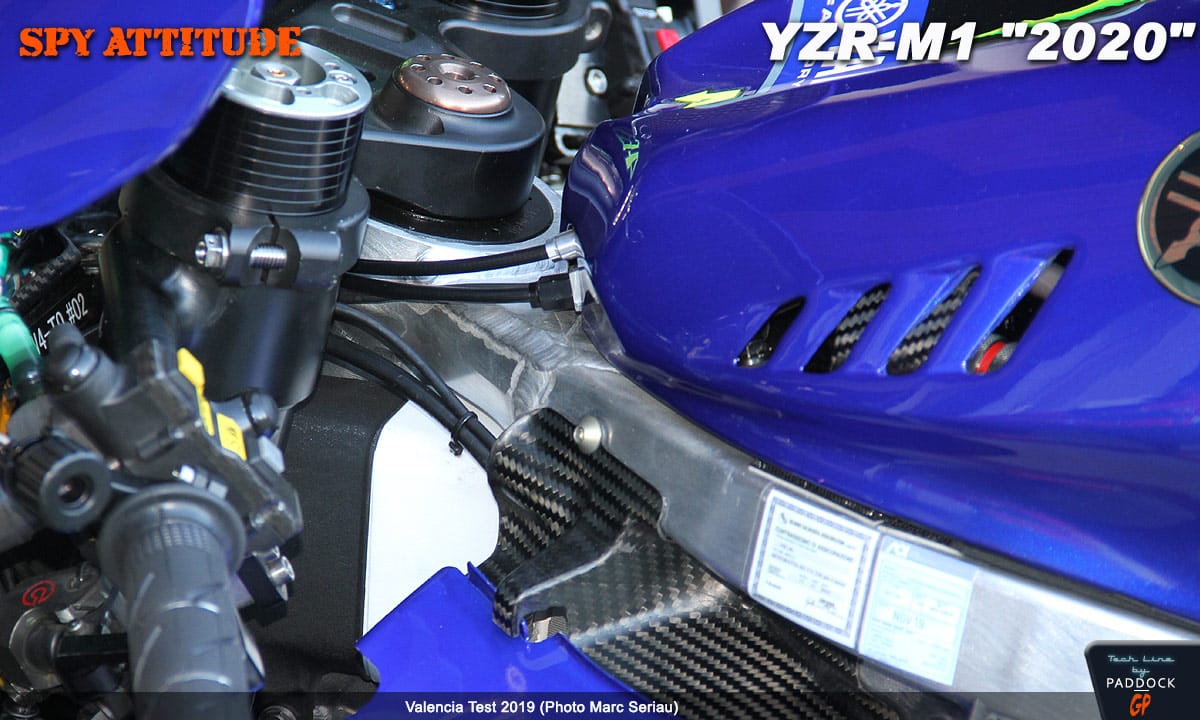
In the end, a few modifications but no revolution was visible on these prototypes, one of which nevertheless allowed Maverick Vinales to be at the top of the ranking, both in Valencia and Jerez.
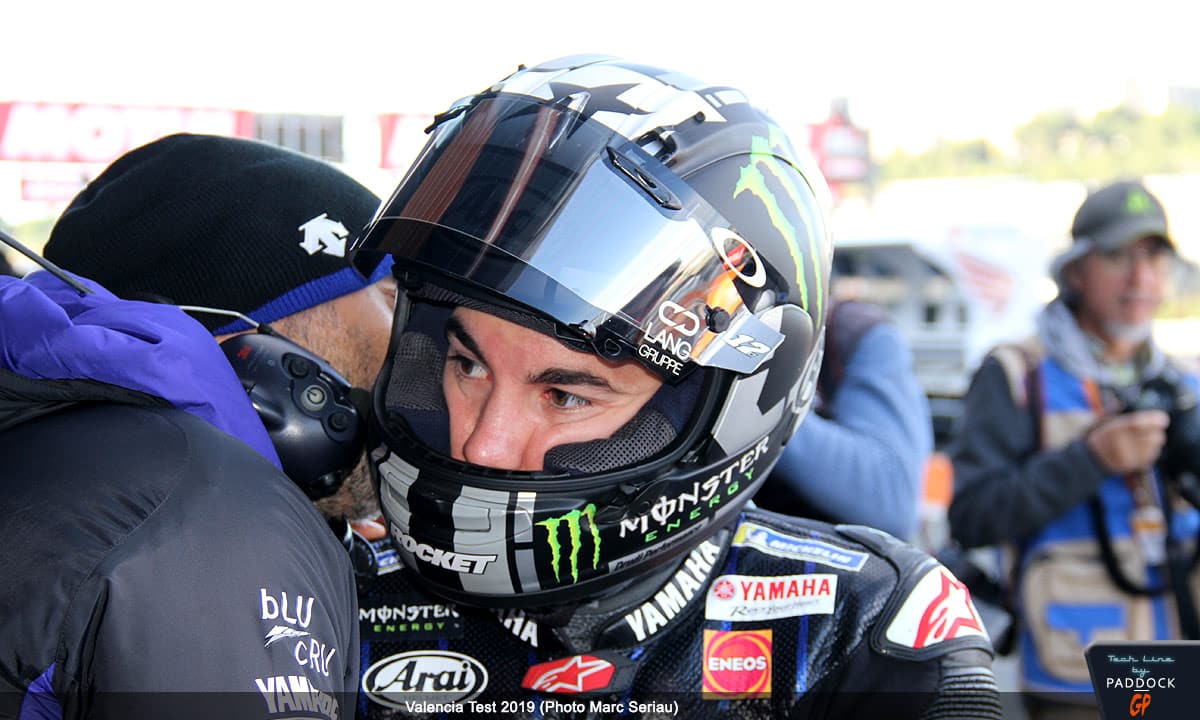
The accelerator handle, still mechanical, acts directly on two cylinders, the others being managed electronically by the ECU according to the rider's request and the circumstantial parameters of the motorcycle...
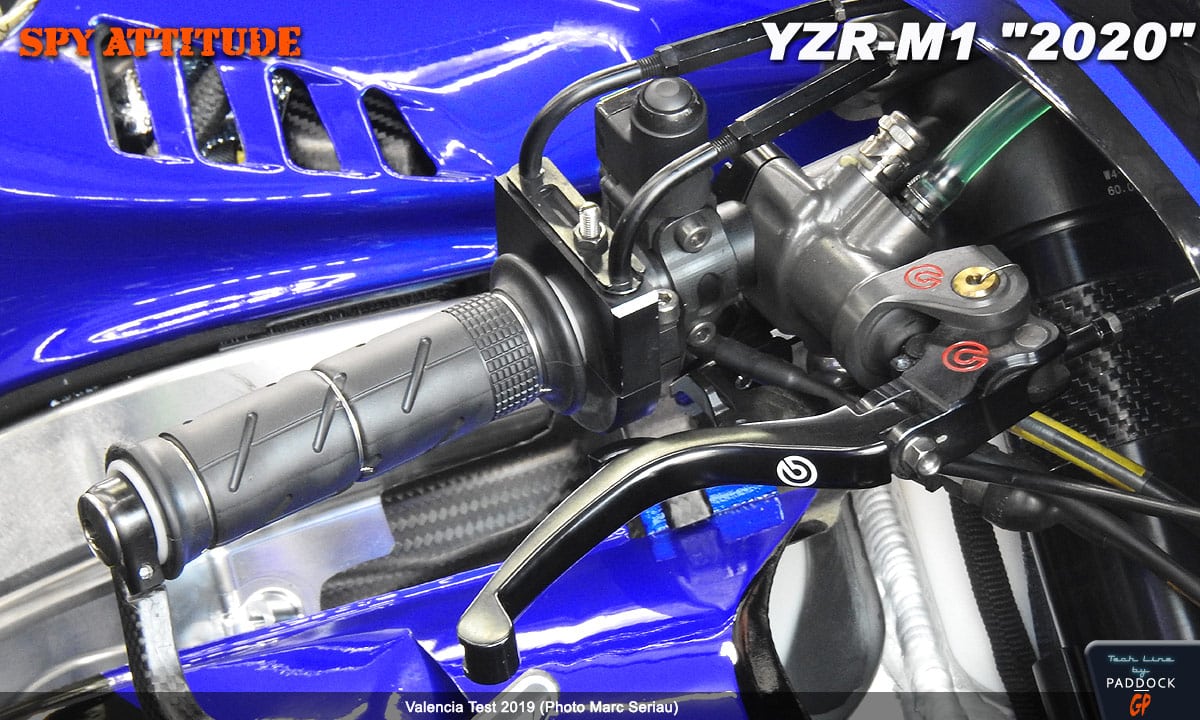
Reservoir…
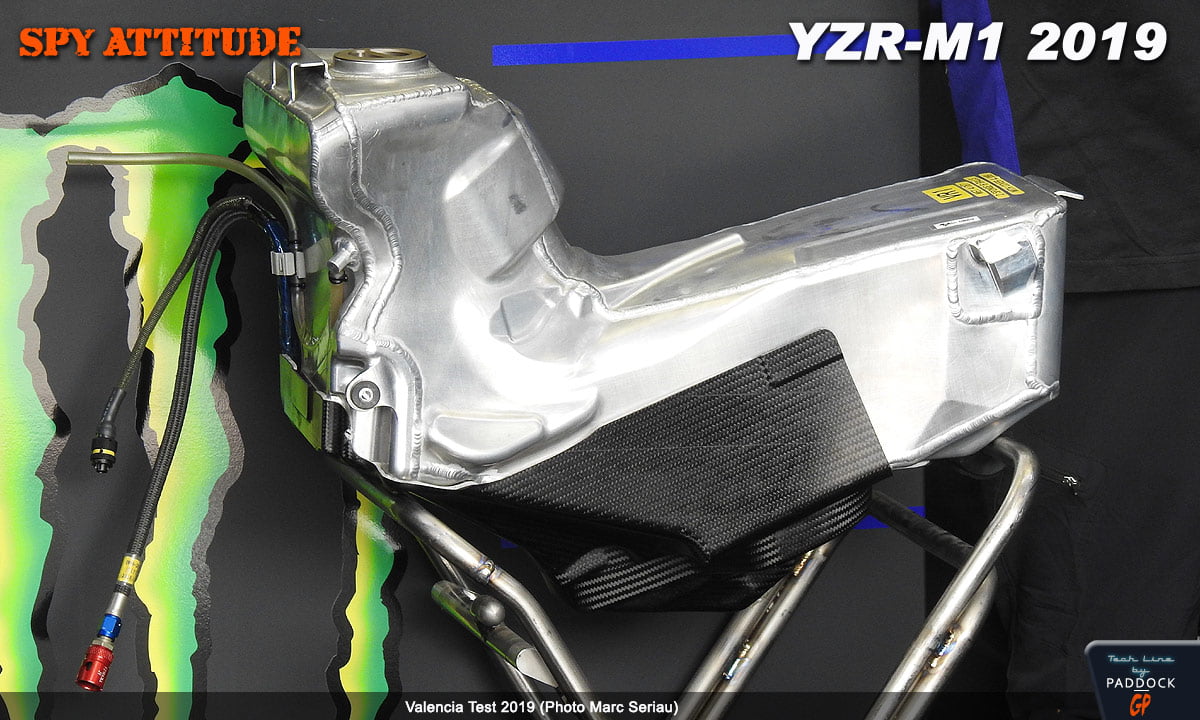
Well-filled saddle…
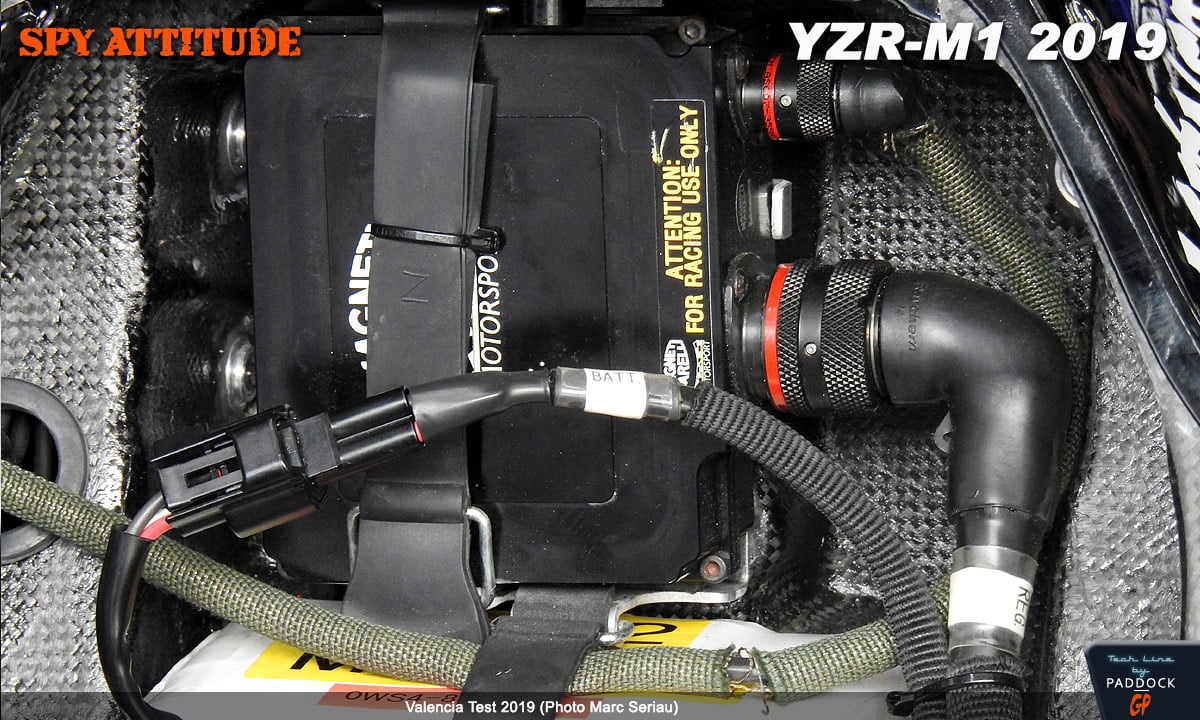
Note that we had left in the closet (or more precisely at Petronas) the carbon swingarm and other front wheel covers...
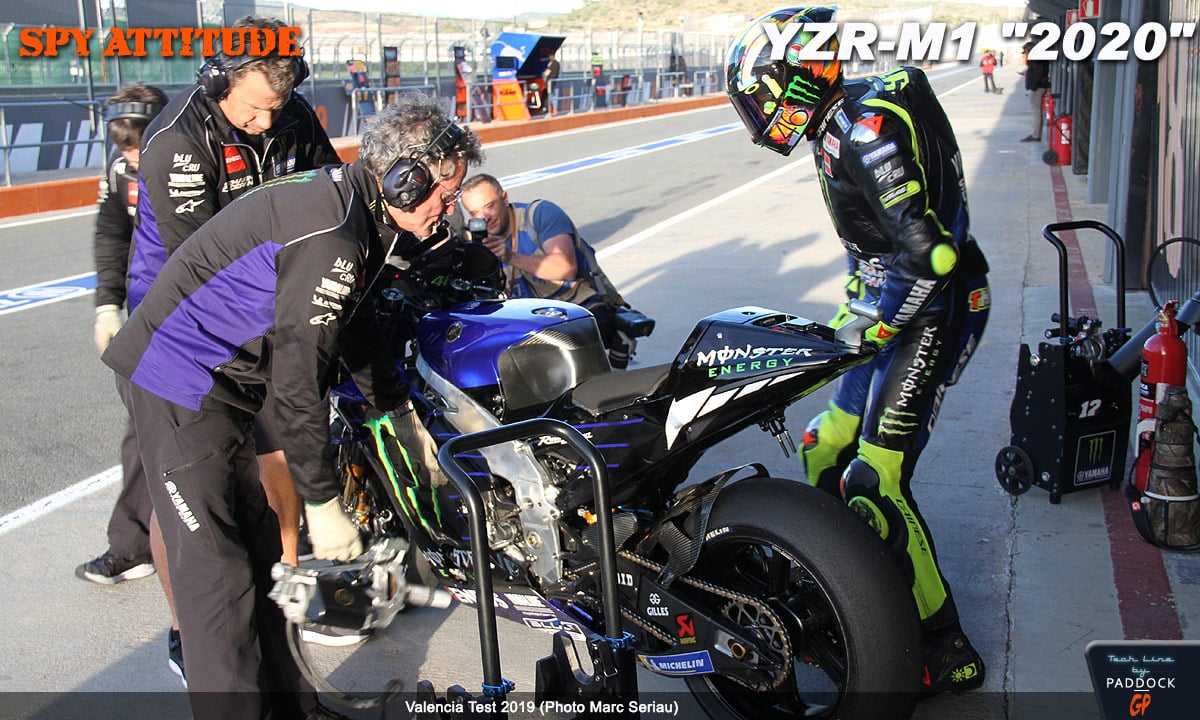
Obviously, external observation of MotoGP can only give a very partial idea of the developments in progress. In this case, it is impossible to confirm whether Yamaha is really working, and how, on what cost the two manufacturers of in-line four-cylinders a year of poor performance, namely the fixed mass (too light in 2018) of the crankshaft, cannot be modified during the season…
We are therefore aware of the limits of these comments “Spy Attitude”, but certain signs lead us to believe that they are probably not completely useless...
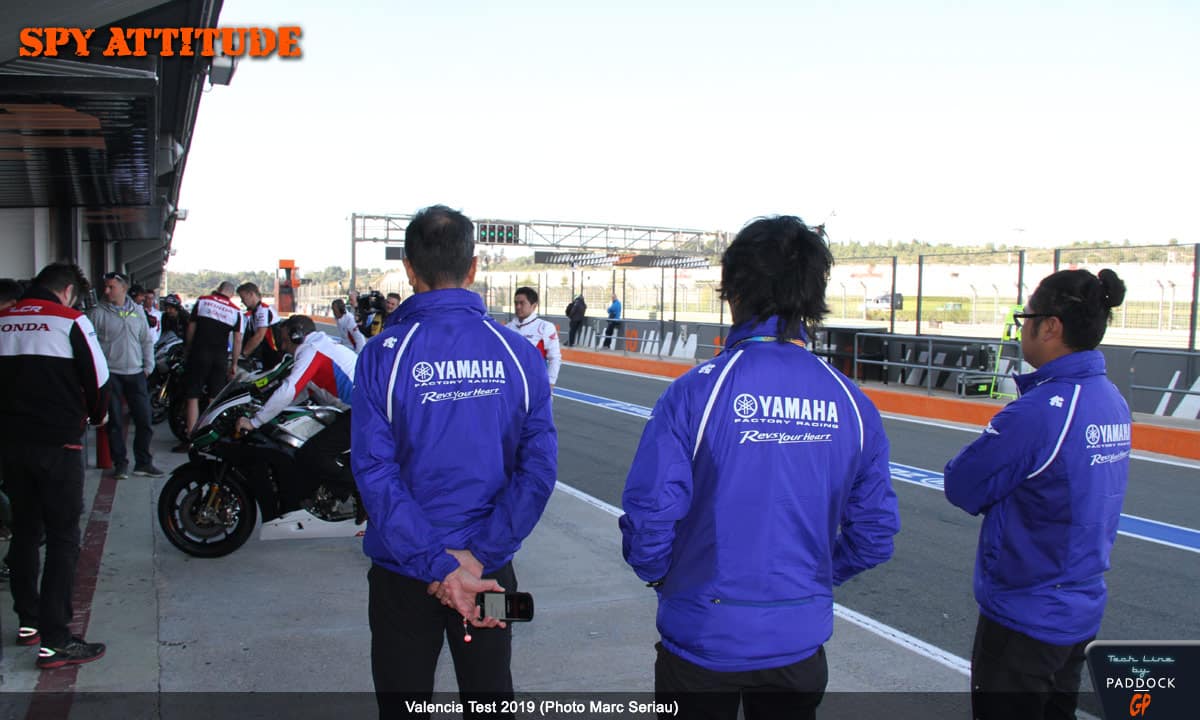
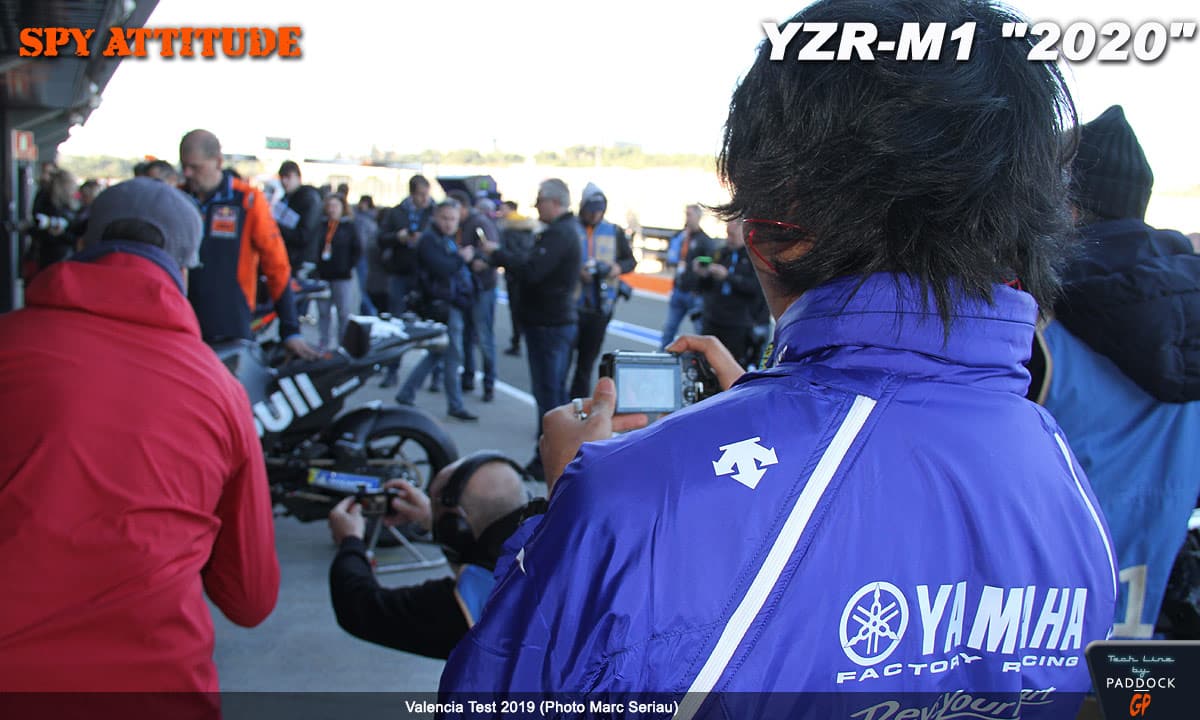
While waiting for those concerning Ducati and Honda, find here the observations of Suzuki, KTM et Aprilia.















